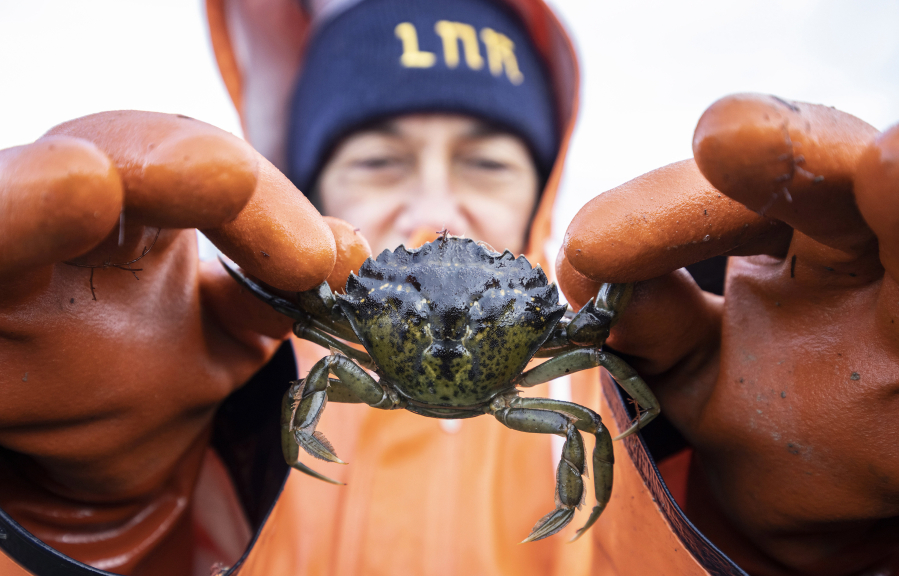Skagit County has seen a large uptick of invasive European green crabs over the past two months.
As of Oct. 21, 109 European green crabs have been caught in Samish Bay since the start of the year, according to Northwest Straits Commission Project Coordinator Jeff Whitty.
The majority of the crabs were caught between late September and early October.
The Northwest Straits Commission has been working with others, including Taylor Shellfish, to capture the crabs.
Up until these recent catches, Taylor Shellfish Director of Public Affairs Bill Dewey said the low summer catches were encouraging.
Throughout the summer, only 25 European green crabs were caught in front of the Taylor Shellfish facility in Bow, which is where the majority of the crabs are being caught, said Dewey.
Based on research done on the invasive species, Dewey said he thinks there might be a fall or winter migration out of Colony Creek lagoon into the bay.
“This is a pattern shellfish growers in the coastal estuaries are noticing,” he said. “We moved some of our traps to the mouth of Colony last week thinking we might catch some of that migration.”
According to the research cited by Dewey, titled “Seasonal estuarine movements of green crabs revealed by acoustic telemetry” in the January 2022 edition of Marine Ecology Progress Series, most crabs stay in a specific region.
Because of this, the hope is that if hot spots can be found, a larger number of crabs may be caught.
“We are thinking by focusing on areas where we are catching them that we actually might get an upper hand on them,” Dewey said.
Crabs are moving from the shallow water to the deeper sections of the bay to spend the winter. Dewey is hoping that by moving pots to the mouth of Colony Creek many crabs can be caught during that migration.
Unfortunately, the weather this time of year will likely put an end to trapping efforts.
“It’s hard to service those pots this time of the year when the weather gets rough,” Dewey said.
According to Whitty, the Commission’s efforts in Samish Bay are likely done for the year and will restart in April.
Padilla Bay has also had a disturbing uptick in the number of green crab being found, said Roger Fuller, natural resource coordinator at the Padilla Bay National Estuarine Research Reserve.
The total number caught in Padilla Bay is up to 49.
“Last year we had 10, and the total since the first capture in 2016 up through 2021 was 23 crabs,” Fuller said in an email. “So far this year we’ve more than doubled everything we caught the previous six years combined.”
All of the crabs caught this year have been less than two years old, with the majority being under a year old, Fuller said.
“Interestingly all the European green crabs we’ve caught this year have been near pilings and rock rip rap,” he said. “Last year they were mostly in saltmarsh areas, so it’s clear that they use different kinds of habitat, as long as there’s something that provides some cover to hide in.”
Rip rap is rocks or rocky material placed along shorelines to protect them from erosion.
This time of year, it is much harder to trap green crabs, but the efforts will continue as long as the Padilla Bay team is able, Fuller said.
The European green crab is considered one of the world’s worst invasive species because of how it feeds on shellfish, small fish and Dungeness crab.
They also are known to destroy eelgrass beds and estuarine marsh habitats, according to the Department of Fish and Wildlife website.



